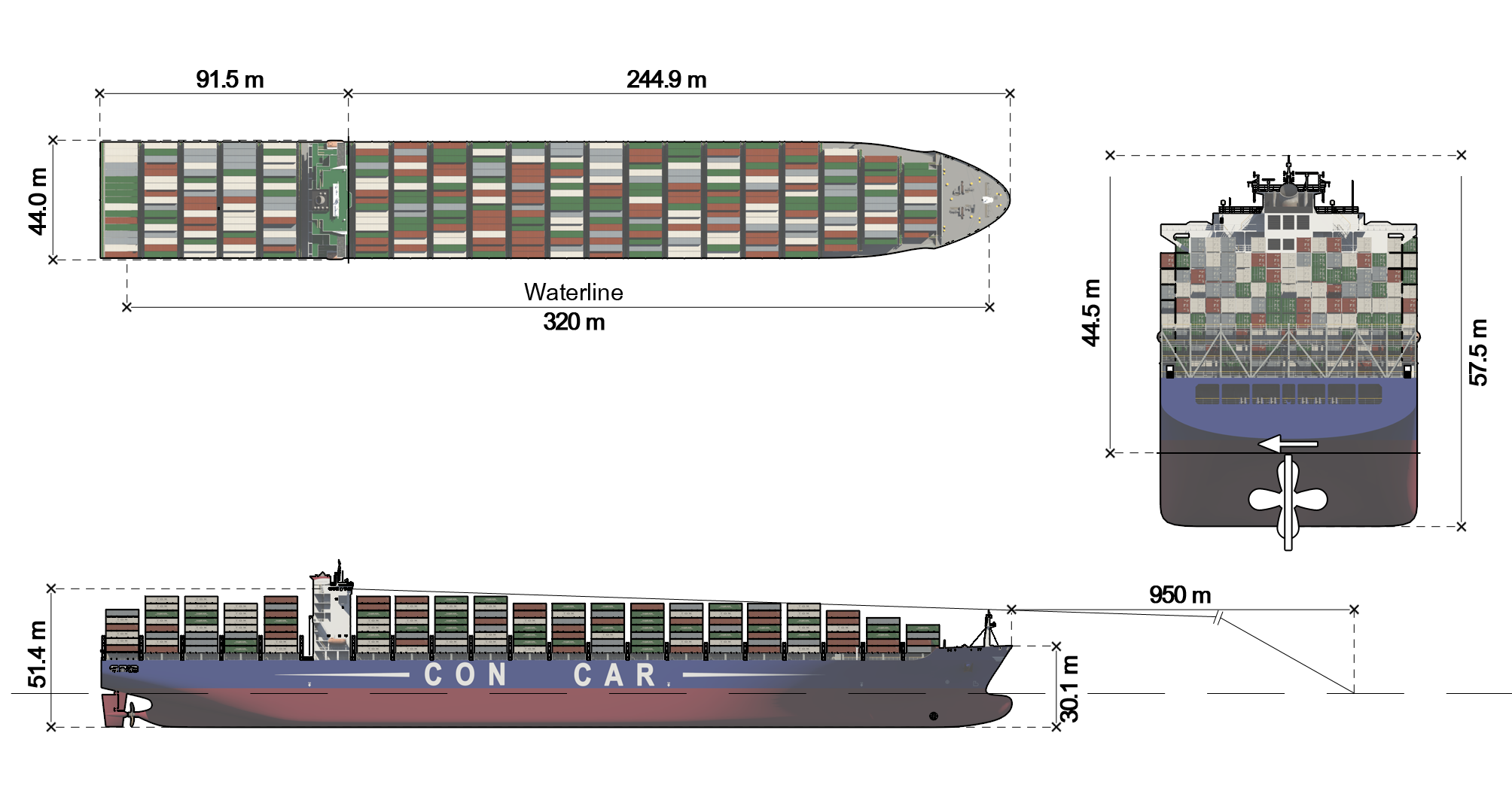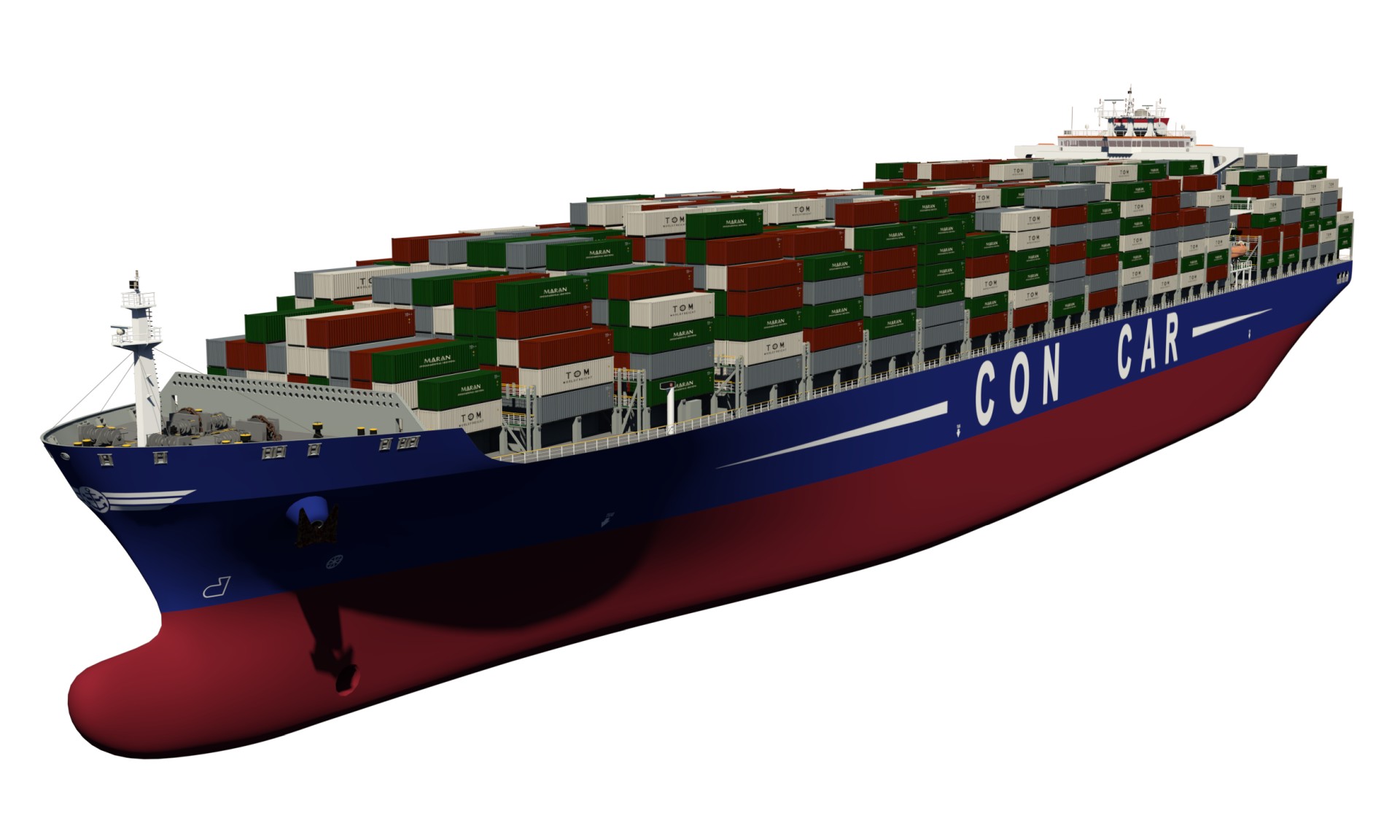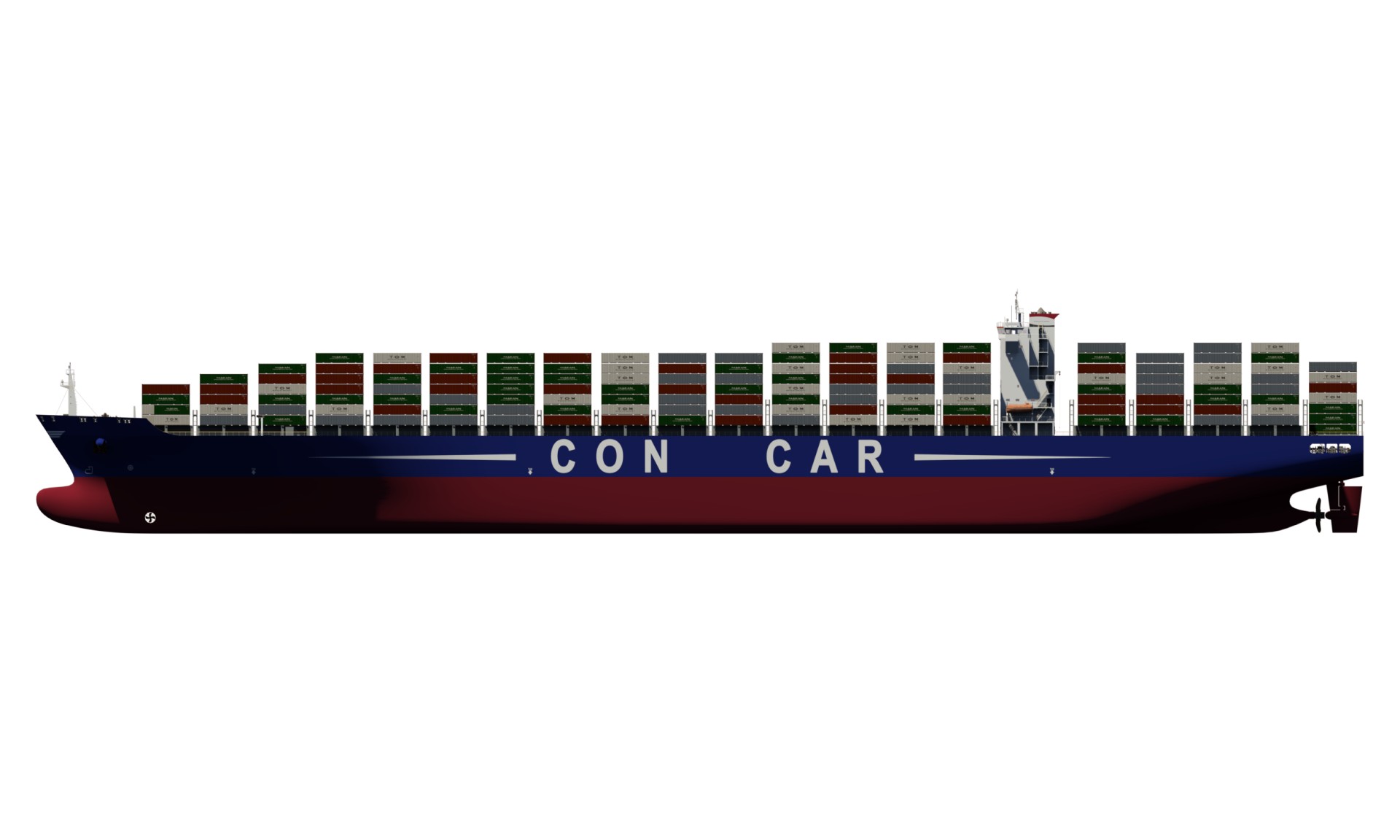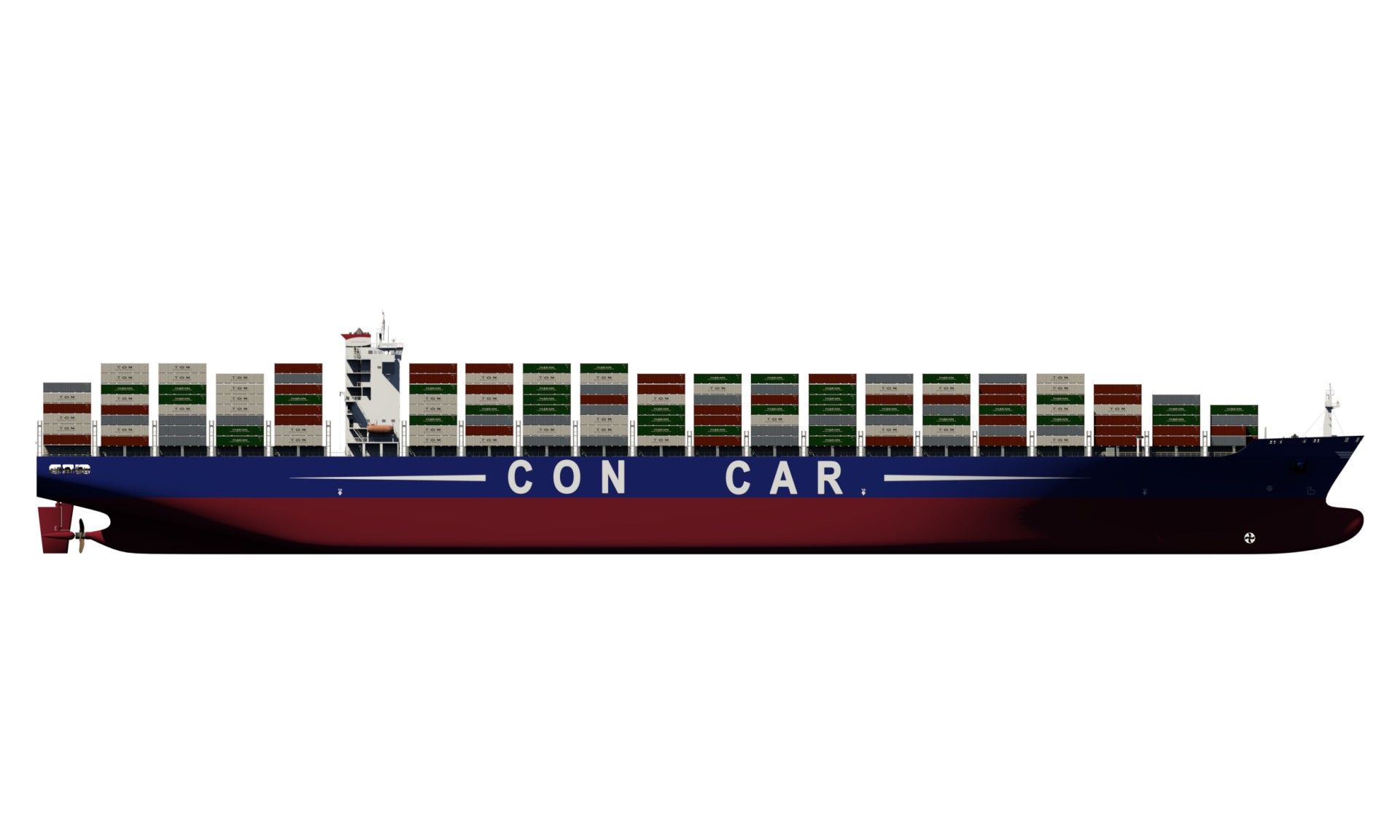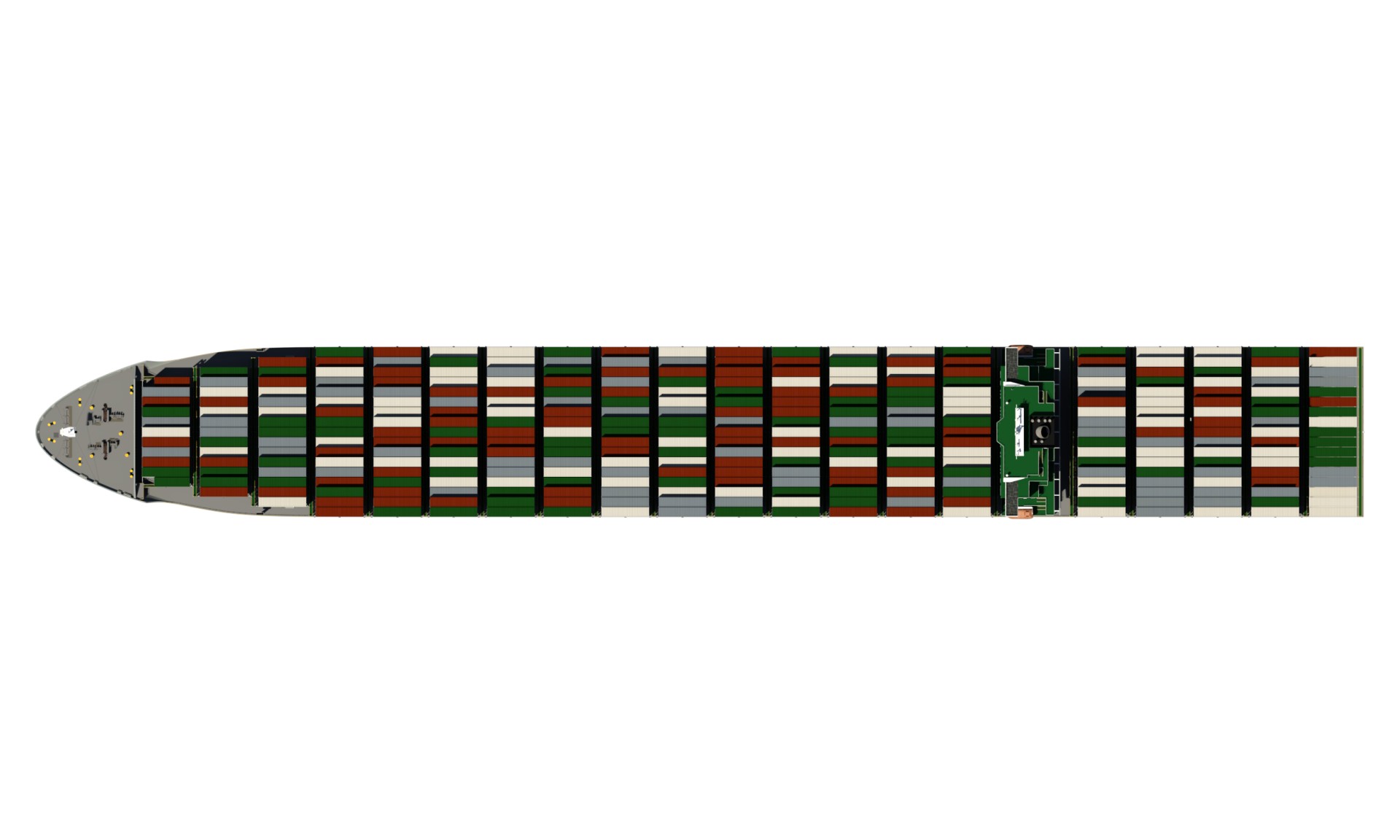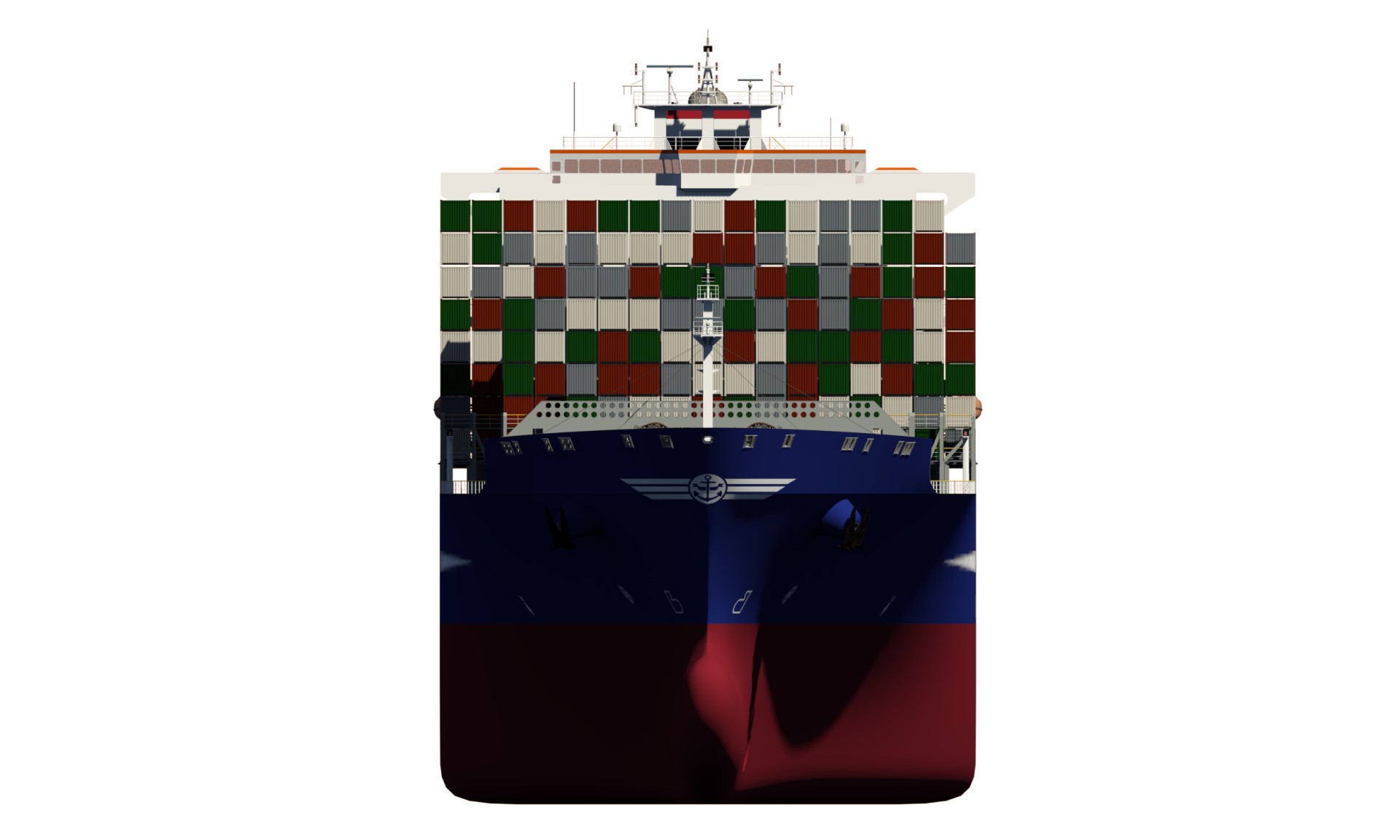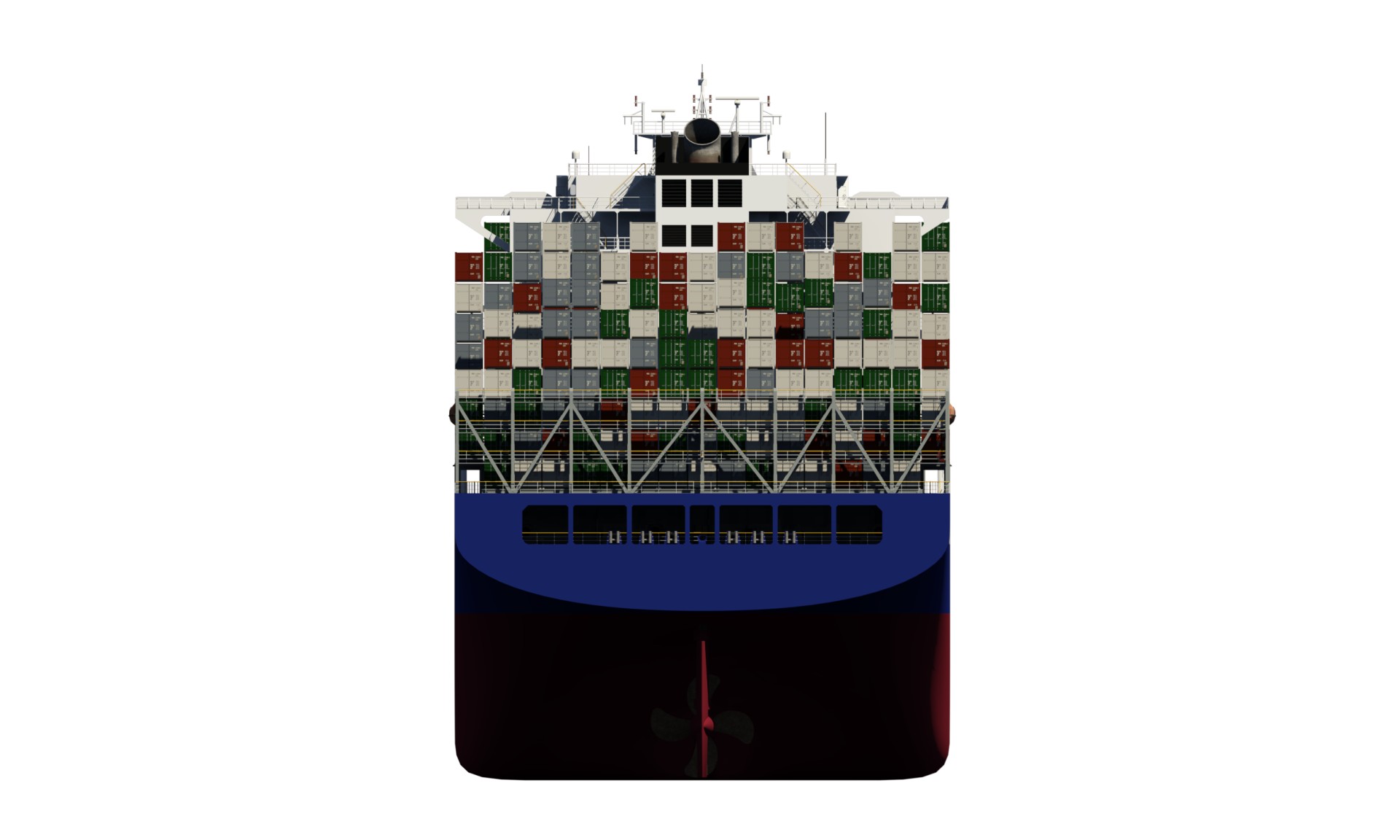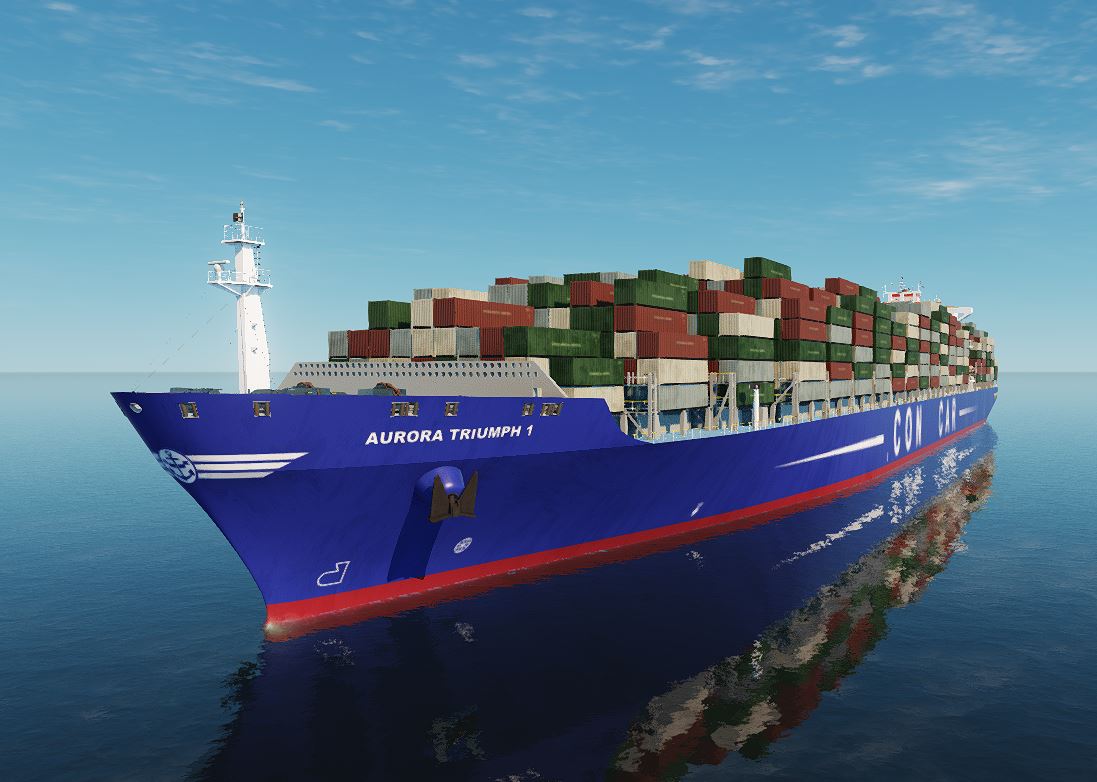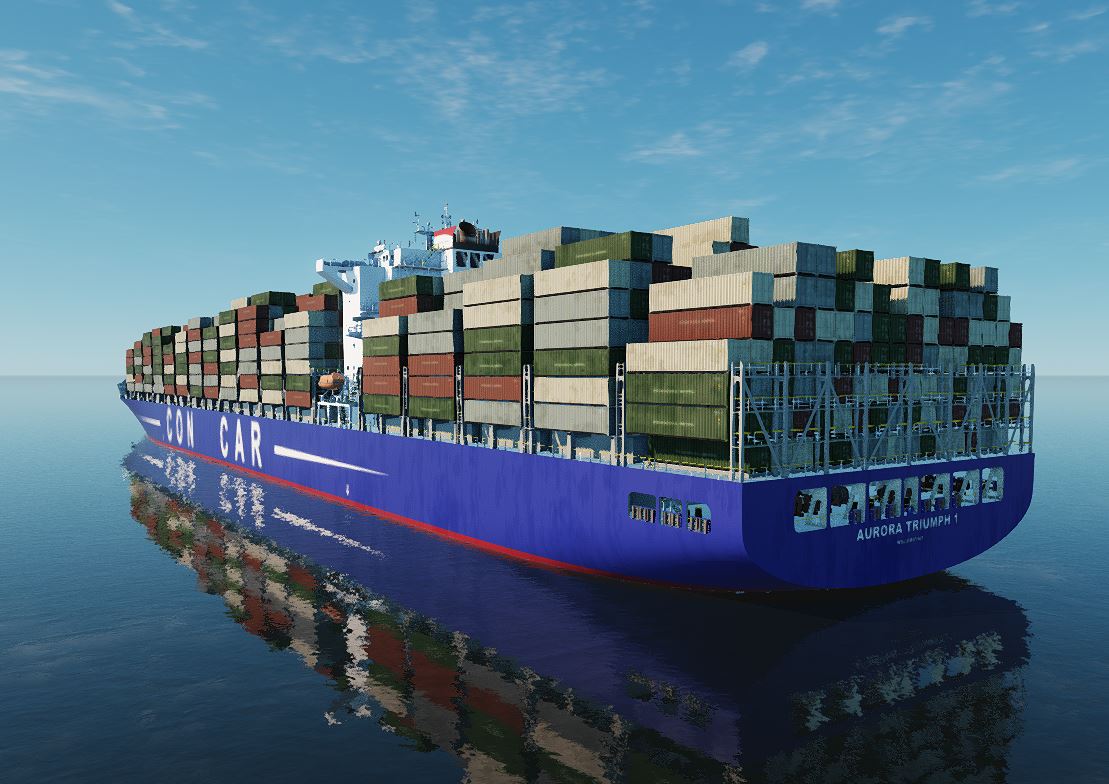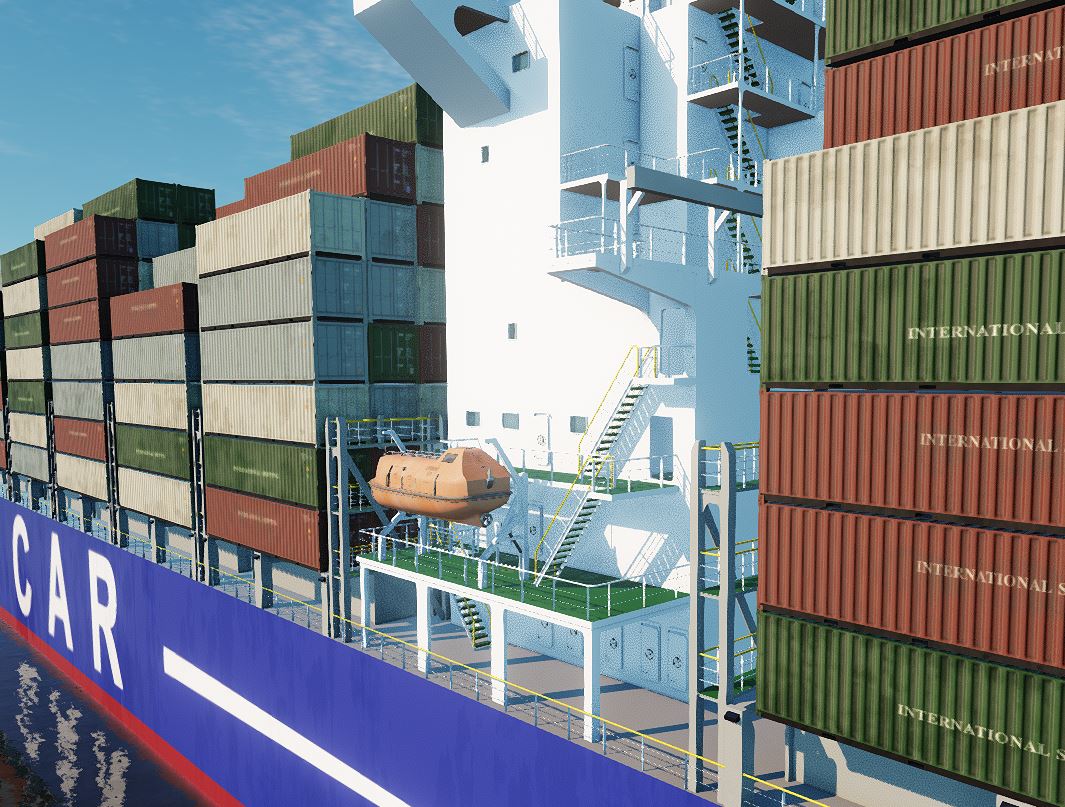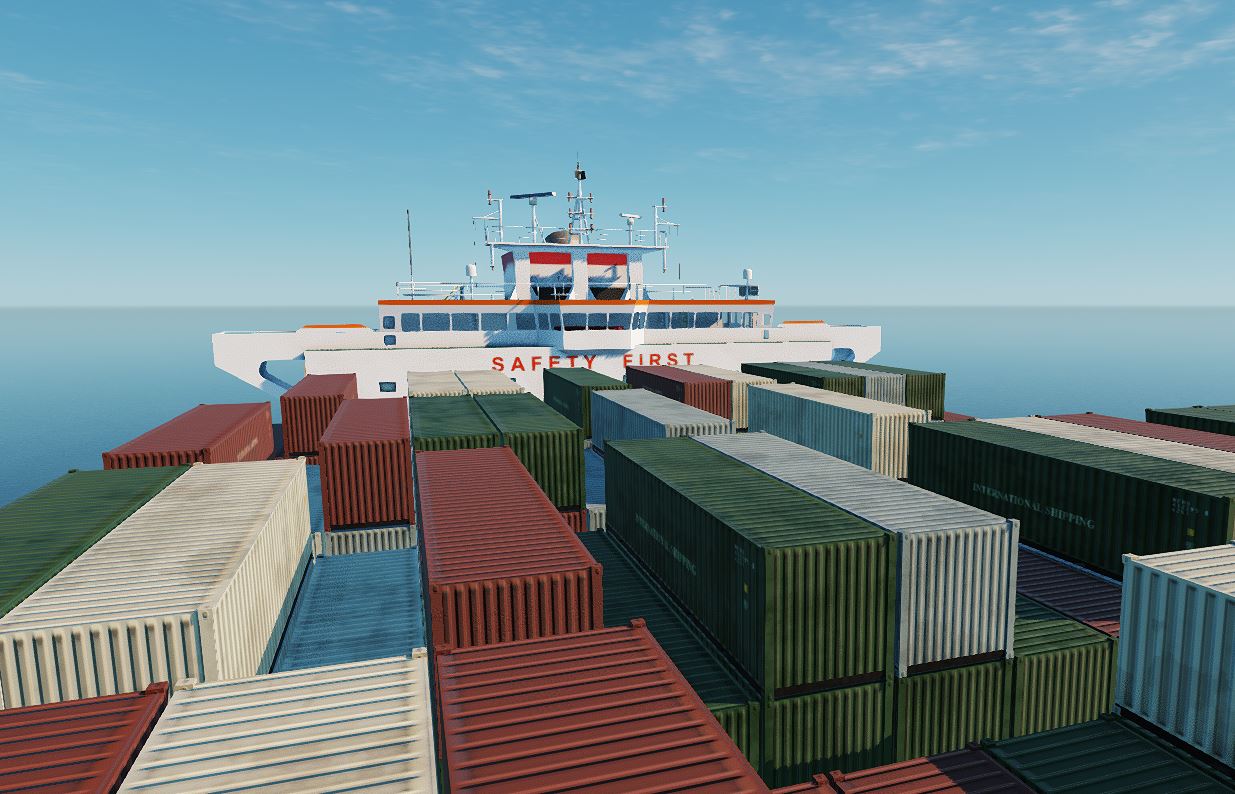
A container ship (also called boxship or spelled containership) is a cargo ship that carries all of its load in truck-size intermodal containers, in a technique called containerization. Container ships are a common means of commercial intermodal freight transport and now carry most seagoing non-bulk cargo.
Container ship capacity is measured in twenty-foot equivalent units (TEU). Typical loads are a mix of 20-foot (1-TEU) and 40-foot (2-TEU) ISO-standard containers, with the latter predominant.
Today, about 90% of non-bulk cargo worldwide is transported by container ships, and the largest modern container ships can carry up to 24,000 TEU. Container ships now rival crude oil tankers and bulk carriers as the largest commercial seaborne vessels.
Economies of scale have dictated an upward trend in the size of container ships in order to reduce expenses. However, there are certain limitations to the size of container ships. Primarily, these are the availability of sufficiently large main engines and the availability of a sufficient number of ports and terminals prepared and equipped to handle ultra-large container ships. Furthermore, the permissible maximum ship dimensions in some of the world’s main waterways could present an upper limit in terms of vessel growth.
| Element | Value |
|---|---|
| Name | Aurora Triumph |
| ID | AURO |
| Type | Container |
| Length (m) | 321,7 |
| Breadth (m) | 42,8 |
| Draught (m) | 13,1 |
| Speed (kts) | 25,6 |
| Displacement (T) | 115.000 |
| Propulsion | Conv. FPP (1x) |
| Bollard Pull (T) | – |
| Base Module | No |
| Standard 5 Module | Target |
| Standard 10 Module | Trainee |
| Tug Module | No |
| Inland Module | Target |
| Naval Module | No |
| Fishing Module | No |
| Marin Module | No |
| Offshore Module | No |
